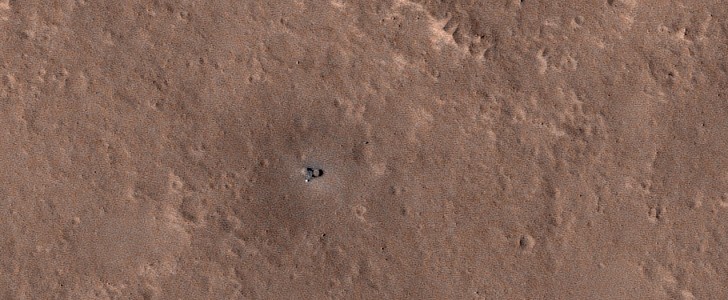Mars is a dusty place. In fact, in the absence of vegetation, rivers and seas, or alien settlements, dust is just about the single most exciting thing happening there, as it gets blown from place to place by winds, sometimes in the form of storms the size of the entire planet.
Dust is also the biggest enemy for the hardware we humans have sent up there over the years. It’s not violent enough as to damage said hardware by striking it, and despite being everywhere it doesn’t really make its way into sensitive equipment all that often. But it does have the capability of covering up solar panels, in essence killing the machinery attached to them.
That’s exactly what happened back in 2018, when an unprecedented storm, which covered the entire planet, abruptly ended the mission of the Opportunity rover.
At the moment, Mars houses six rovers, most of them no longer functional (the American Sojourner, Spirit, Opportunity, Curiosity, and Perseverance, and the Chinese Zhurong), and a variety of landers. Part of this latter group is the InSight, tasked with studying the deep interior of the planet, including by recording marsquakes.
Back in June, NASA announced the life of the lander was ending on account of dust as well. Enough of the stuff now covers the thing’s solar panels that its instruments are working at just ten percent capacity.
Just to show us that dust working its way to kill the InSIght is a force to be reckoned with, NASA and the University of Arizona recently published a photo taken from orbit by the HiRISE camera. The pic is older than the most recent news about the InSIght, having been taken back in March, but clearly shows “a visible coating of reddish Martian dust that has accumulated since the landing (November 2018) and especially during the January 2022 storm.”
In fact, so much dust has been blown on the site that even the blast zone created during landing, which generally appears as black, has almost disappeared, and the discarded parachute is barely visible under the reddish substance.
Say that for some reason, we humans do not reach the Red Planet for centuries to come, and we forget all about the whereabouts of this equipment that gets slowly buried. Can you imagine just how important of an archeological find these things we now take for granted will be for future generations?
That’s exactly what happened back in 2018, when an unprecedented storm, which covered the entire planet, abruptly ended the mission of the Opportunity rover.
At the moment, Mars houses six rovers, most of them no longer functional (the American Sojourner, Spirit, Opportunity, Curiosity, and Perseverance, and the Chinese Zhurong), and a variety of landers. Part of this latter group is the InSight, tasked with studying the deep interior of the planet, including by recording marsquakes.
Back in June, NASA announced the life of the lander was ending on account of dust as well. Enough of the stuff now covers the thing’s solar panels that its instruments are working at just ten percent capacity.
Just to show us that dust working its way to kill the InSIght is a force to be reckoned with, NASA and the University of Arizona recently published a photo taken from orbit by the HiRISE camera. The pic is older than the most recent news about the InSIght, having been taken back in March, but clearly shows “a visible coating of reddish Martian dust that has accumulated since the landing (November 2018) and especially during the January 2022 storm.”
In fact, so much dust has been blown on the site that even the blast zone created during landing, which generally appears as black, has almost disappeared, and the discarded parachute is barely visible under the reddish substance.
Say that for some reason, we humans do not reach the Red Planet for centuries to come, and we forget all about the whereabouts of this equipment that gets slowly buried. Can you imagine just how important of an archeological find these things we now take for granted will be for future generations?








